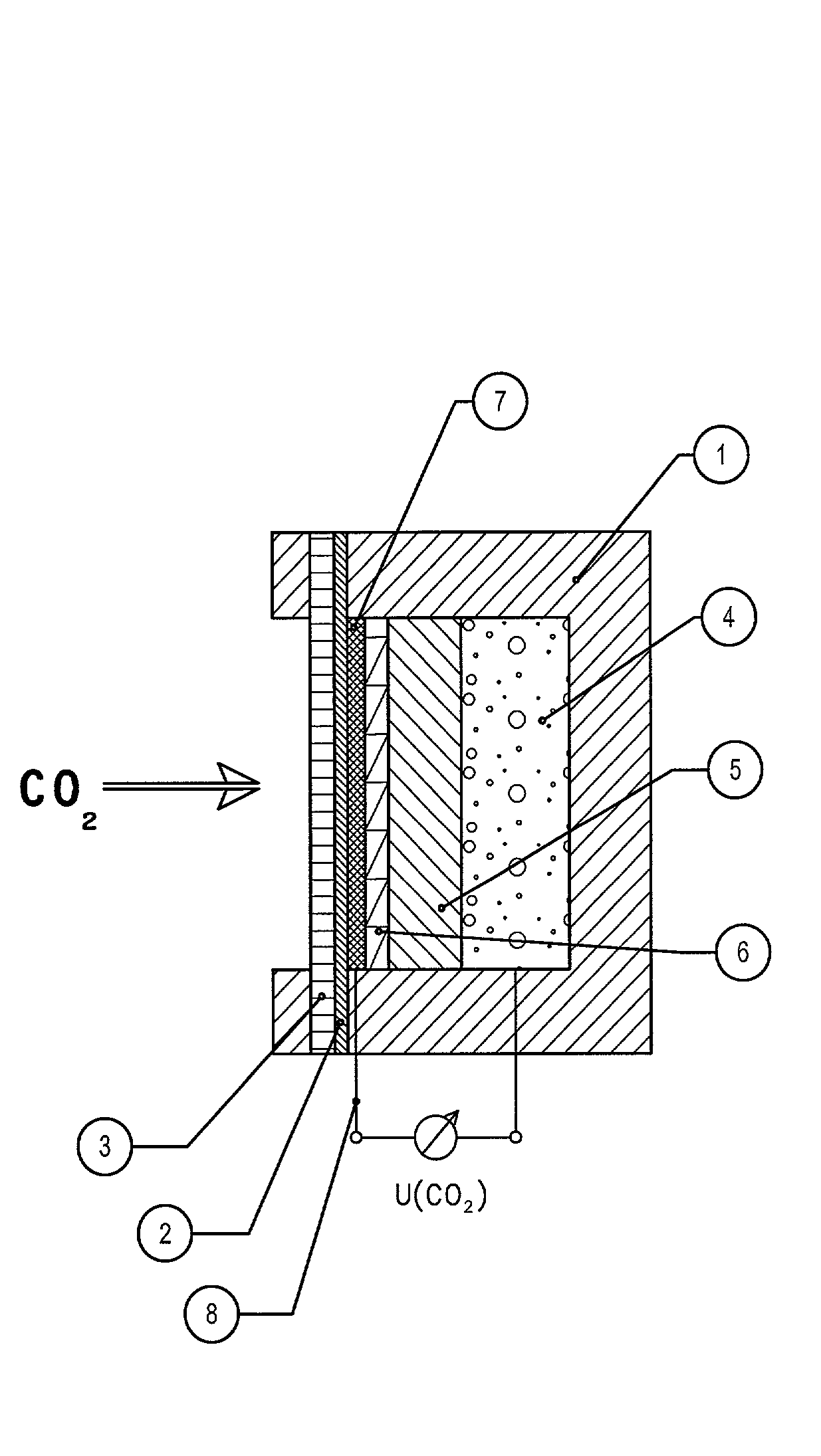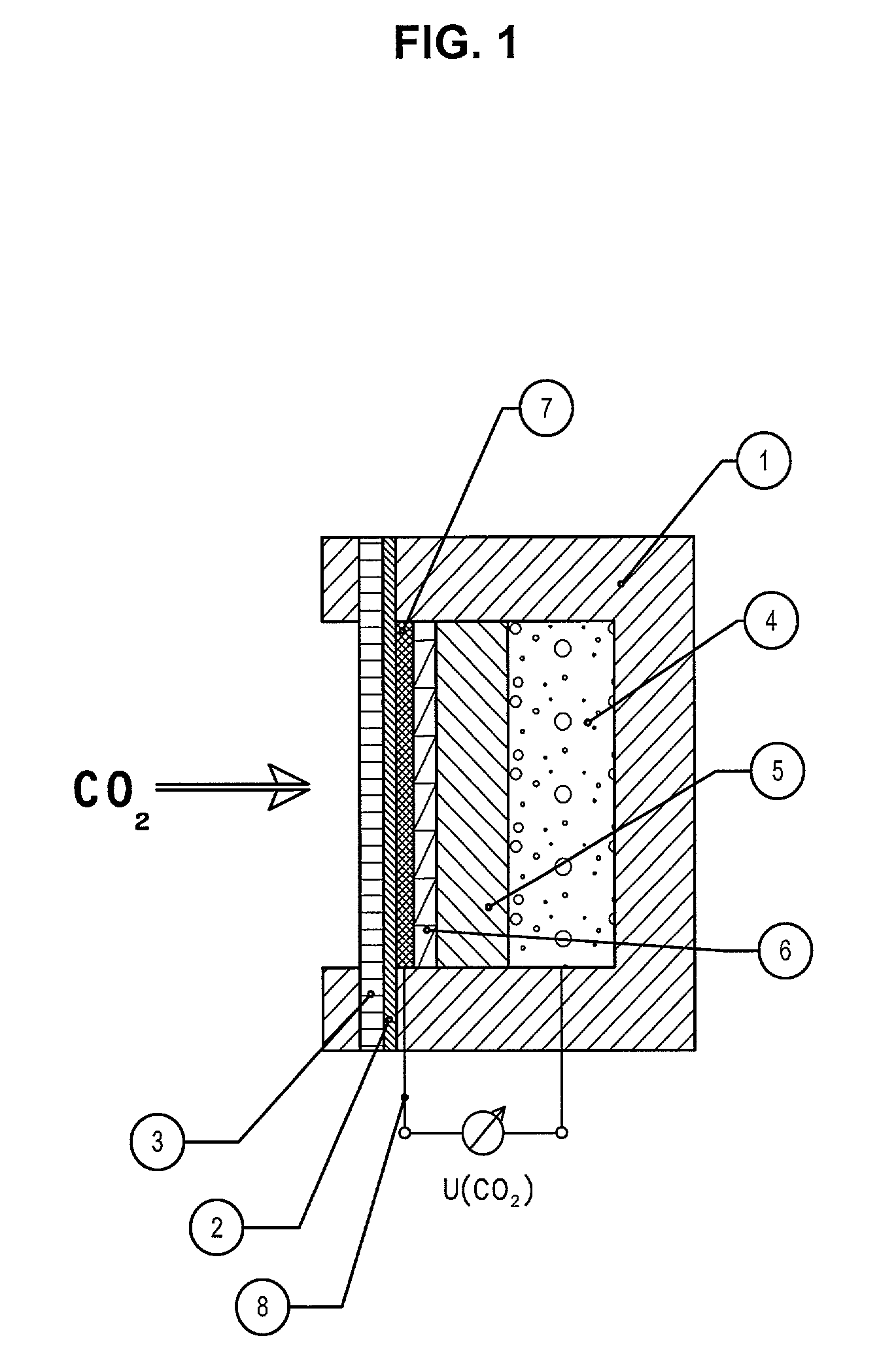Device for the measurement of the carbon dioxide partial pressure
a technology of partial pressure and carbon dioxide, which is applied in the direction of material thermal analysis, withdrawing sample devices, testing metals, etc., can solve the problems of faulty measurements, high manufacturing costs due to mechanical precision requirements, and sensitivity to humidity and dust, etc., and achieves the effect of simple design, small size and fast measurement of the partial pressure of carbon dioxid
- Summary
- Abstract
- Description
- Claims
- Application Information
AI Technical Summary
Benefits of technology
Problems solved by technology
Method used
Image
Examples
Embodiment Construction
[0035] FIG. 1 shows a device for the fast measurement of a change in the partial pressure of carbon dioxide. In a housing (1) with an opening for gas entrance, with a hydrophobic protecting membrane (2) and a supporting grid (3), a first electrode (4) is located that consists of a coil of chlorinated silver wire which has a contact wire through the housing to the outside, a glass fibre wick filled with electrolyte (5), a porous plate of polyethylene soaked with electrolyte (6) and a porous hydrophobic membrane of FEP that is sputtered with an electrically conductive carbon layer (7) and is wetted with a mixture of electrolyte and a 104 molar quinehydrone solution. A thin contact wire of platinum (8) is pressed into the carbon layer and lead through the housing towards the outside.
[0036] This construction leads to very short diffusion ways for carbon dioxide diffusing either inwards or outwards and the volume of electrolyte interacting with carbon dioxide is limited. By this the resp...
PUM
 Login to View More
Login to View More Abstract
Description
Claims
Application Information
 Login to View More
Login to View More - R&D
- Intellectual Property
- Life Sciences
- Materials
- Tech Scout
- Unparalleled Data Quality
- Higher Quality Content
- 60% Fewer Hallucinations
Browse by: Latest US Patents, China's latest patents, Technical Efficacy Thesaurus, Application Domain, Technology Topic, Popular Technical Reports.
© 2025 PatSnap. All rights reserved.Legal|Privacy policy|Modern Slavery Act Transparency Statement|Sitemap|About US| Contact US: help@patsnap.com


